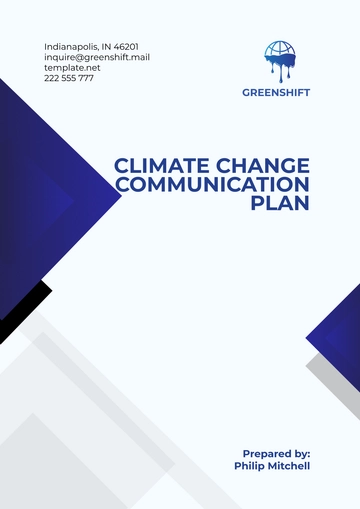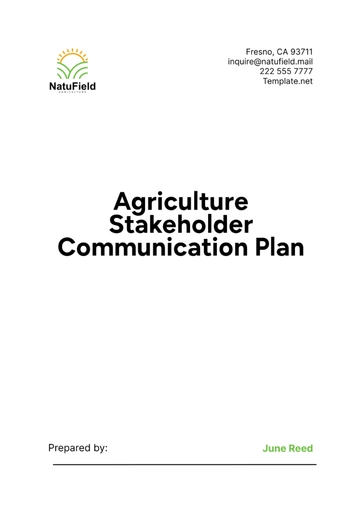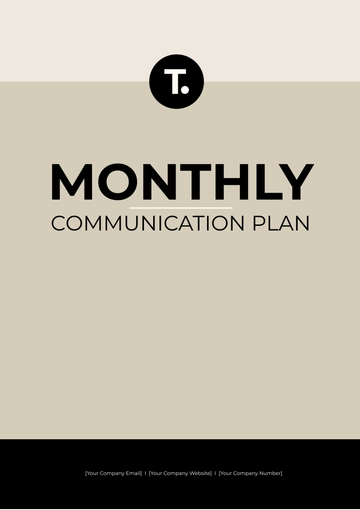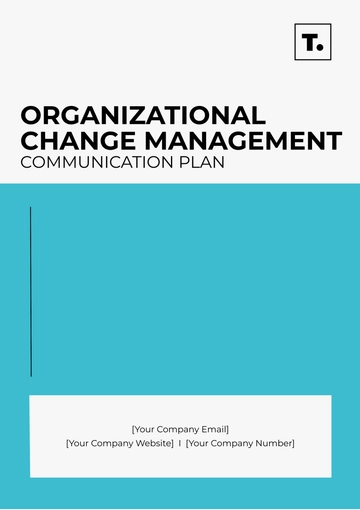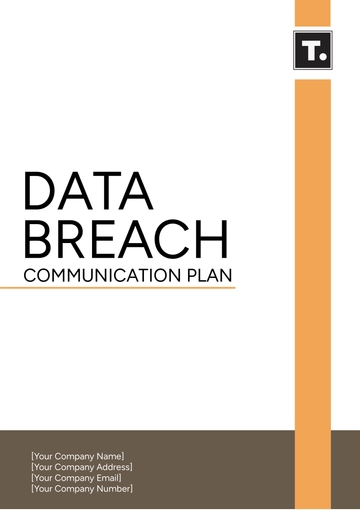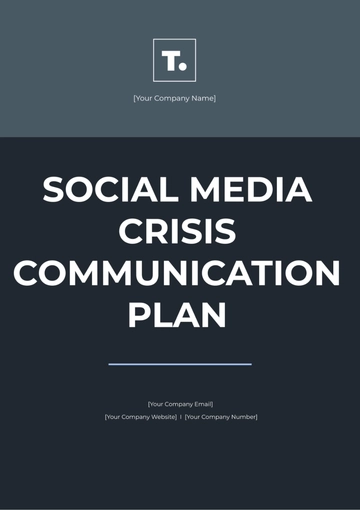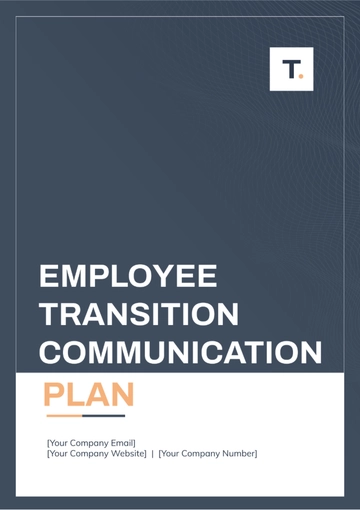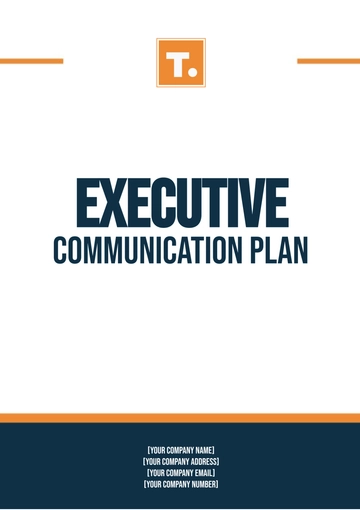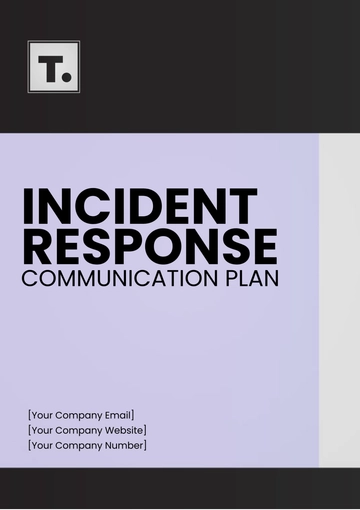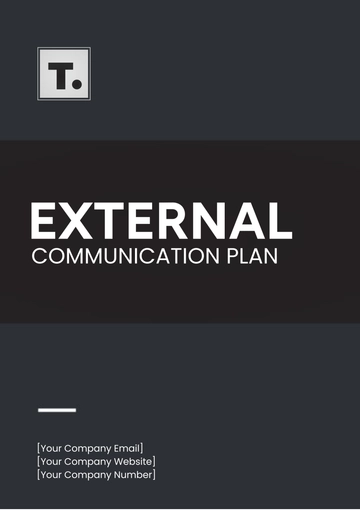Free Agriculture Stakeholder Communication Plan
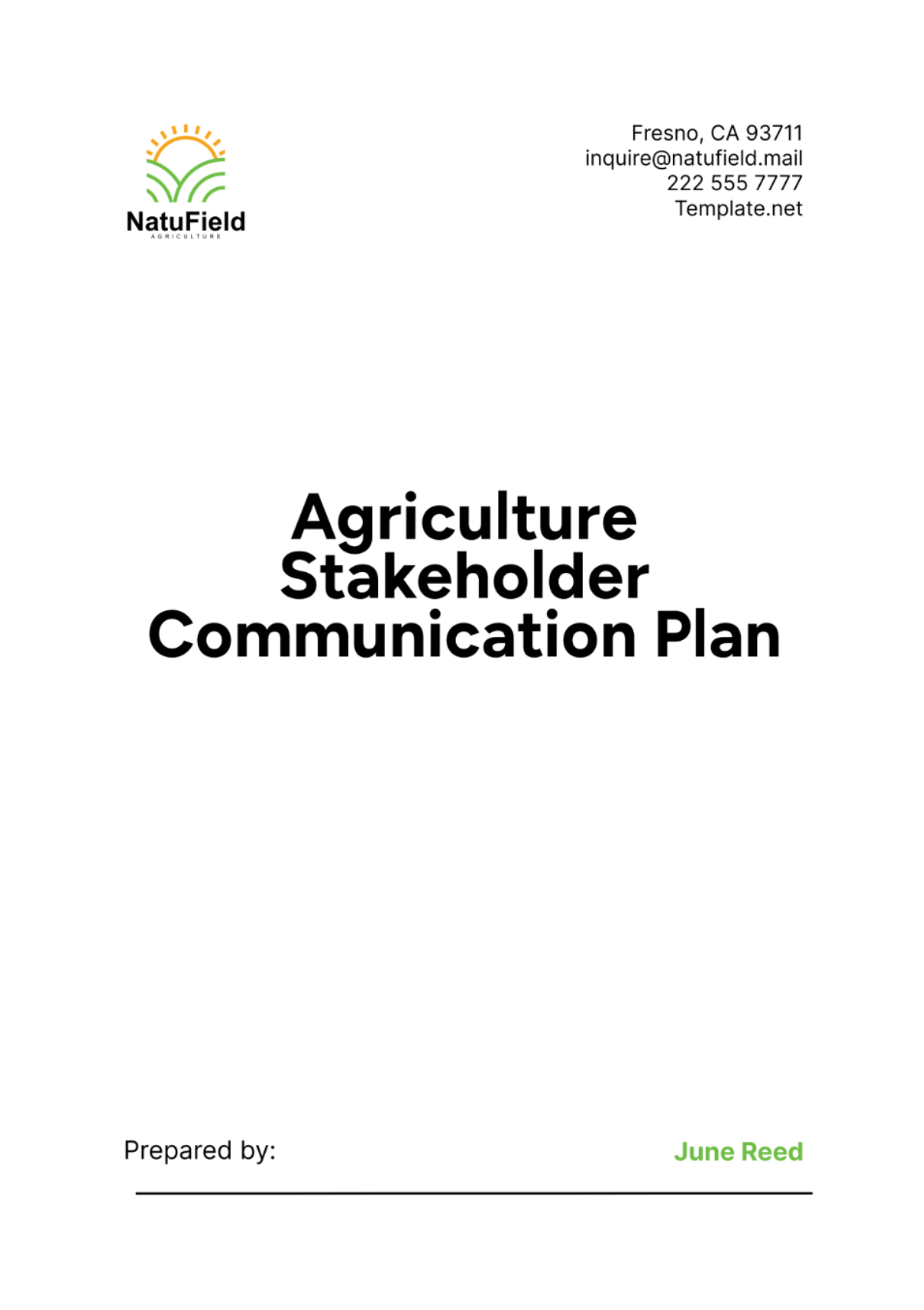
I. Introduction
A. Overview of the Agricultural Organization
[Your Company Name] is a leading advocate for sustainable farming practices in [State], established in [Year]. Our organization specializes in organic vegetable farming and greenhouse cultivation, producing a wide variety of high-quality vegetables year-round. We prioritize soil health and water conservation, employing advanced irrigation systems and natural fertilizers to minimize environmental impact while ensuring robust crop yields.
B. Purpose and Importance of Stakeholder Communication
Effective stakeholder communication is integral to [Your Company Name]'s mission to foster transparency, trust, and collaboration within our agricultural community. By engaging with stakeholders including farmers, suppliers, distributors, consumers, and local communities, we seek to share knowledge, address concerns, and co-create solutions that benefit all parties. Our communication efforts aim to enhance understanding of our sustainable practices, solicit valuable feedback, and build resilient partnerships that support the future of agriculture.
II. Stakeholder Analysis
A. Identification of Key Stakeholder Groups
[Your Company Name] recognizes the critical importance of engaging diverse stakeholder groups that impact and are impacted by our agricultural activities. Key stakeholders include farmers who rely on our technologies and practices, suppliers and distributors crucial to our supply chain, local communities affected by our operations, regulatory agencies influencing our compliance, environmental groups advocating for sustainable practices, and consumers who depend on our products.
B. Stakeholder Mapping
Using a matrix of interest vs. influence, we have categorized stakeholders to prioritize communication efforts and tailor engagement strategies effectively. Stakeholders with high influence and high interest, such as farmers and local community members, are prioritized for direct engagement through workshops and town hall meetings. Those with high influence but low interest, like regulatory agencies, receive targeted updates and compliance reports, while low influence stakeholders with high interest, such as environmental groups, are engaged through collaborative projects and shared advocacy efforts.
III. Communication Objectives
A. General Objectives of the Communication Plan
The main objective of the Communication Plan developed by [Your Company Name] is to create clear and honest lines of communication that help build trust and mutual understanding among all our stakeholders. This comprehensive initiative involves disseminating information regarding our sustainable farming practices, community-focused activities, and the advancements we are making in agricultural technology. Through this sharing of knowledge and updates, we strive not only to fortify our existing relationships but also to establish a wide-reaching, supportive network that advocates for agricultural resilience and propels innovation within the industry.
B. Specific Objectives for Each Stakeholder Group
For farmers, our objective is to provide ongoing training and support in implementing sustainable practices, ensuring they benefit from our expertise. Local community members will receive regular updates and opportunities to participate in community events that showcase our commitment to their well-being. Regulatory agencies will be informed of our compliance efforts and invited to collaborate on policy recommendations that benefit both industry and environmental sustainability. Environmental organizations will be engaged in joint initiatives that promote biodiversity and conservation, highlighting our shared commitment to environmental stewardship. Consumers will receive educational materials and updates on our product quality and sustainability practices, ensuring they trust and support our products.
IV. Communication Strategies
A. Channels of Communication
Traditional Channels:
Quarterly newsletters featuring success stories and updates.
Annual reports detailing our sustainability achievements and community impact.
Press releases for major announcements and industry recognition.
Face-to-face meetings with stakeholders at community events and industry conferences.
Digital and Social Media Channels:
Dynamic website showcasing our latest projects and initiatives.
Engaging social media platforms (Twitter, Facebook, Instagram) for real-time updates and interaction.
Blog articles and case studies highlighting our sustainable farming practices and technological innovations.
Email newsletters delivering personalized updates and invitations to participate in surveys and feedback sessions.
B. Messaging Framework
Key Messages:
Commitment to sustainable agricultural practices that enhance productivity while preserving natural resources.
Community engagement and support through educational programs and collaborative initiatives.
Innovation in agricultural technologies that improve efficiency and reduce environmental impact.
Tone and Style Guidelines:
Clear and accessible language that conveys professionalism and empathy.
Positive and inspirational tone that reflects our passion for agriculture and sustainability.
Consistent branding and visuals that reinforce our organization’s values and identity across all communication platforms.
C. Content Development
Content Types:
How-to guides and instructional videos for farmers on implementing sustainable practices.
Case studies and success stories showcasing partnerships with local communities and environmental organizations.
Infographics and reports on our environmental impact and conservation efforts.
Video testimonials and behind-the-scenes footage illustrating our commitment to quality and innovation.
Content Calendar and Distribution Schedule:
Monthly newsletter distributed on the 1st of each month, highlighting upcoming events and educational opportunities.
Bi-weekly social media updates featuring engaging content, industry news, and interactive polls.
Quarterly reports released at the end of each quarter, summarizing achievements, challenges, and future goals.
Event announcements and invitations distributed as needed to stakeholders, ensuring timely participation and feedback.
V. Engagement and Participation
A. Stakeholder Engagement Plan
Events and Workshops:
Annual Farming Symposium bringing together stakeholders for knowledge sharing and networking.
Sustainability workshops tailored for local farmers to learn about new technologies and sustainable practices.
Community outreach programs in collaboration with schools and local organizations to educate on agricultural sustainability.
Consultation and Feedback Mechanisms:
Online surveys distributed after events and workshops to gather feedback and suggestions.
Feedback forms available at community meetings and on our website to capture stakeholder insights.
Dedicated email address for stakeholders to submit questions and concerns, ensuring timely responses and resolutions.
B. Participation Opportunities
Collaborative Projects:
Joint research initiatives with universities to explore innovative solutions to agricultural challenges.
Community gardens and farmers' markets supported by [Your Company Name] to promote local produce and sustainable farming practices.
Volunteer opportunities for stakeholders to participate in environmental restoration projects, fostering a sense of community and environmental stewardship.
Advisory Committees or Panels:
Farmer Advisory Board convened quarterly to provide direct input on organizational strategies and initiatives.
Sustainability task force comprising environmental experts and community representatives to guide long-term sustainability goals.
Consumer focus groups convened periodically to gather insights on product preferences and sustainability concerns.
VI. Crisis Communication Plan
A. Potential Risks and Issues in Agriculture
Within the agricultural sector, there are several potential risks that could adversely affect operations and productivity. One significant risk is the failure of crops, which can occur as a result of extreme weather events such as droughts, floods, hurricanes, and unexpected temperature changes. These weather-related challenges are becoming increasingly frequent and severe due to global climate change. Another potential risk involves regulatory changes that can impact farming practices. Governments and regulatory bodies may implement new rules and guidelines related to environmental protection, pesticide usage, labor standards, and other aspects of farming that could require significant adjustments in the way agricultural activities are conducted. Additionally, food safety incidents due to contamination pose health risks and can lead to recalls and loss of consumer trust. Public misconceptions about modern farming methods and their environmental impact, often fueled by misinformation, can also hinder the adoption of efficient practices. Effective communication and education are needed to address these misunderstandings.
B. Crisis Response Team and Protocols
[Your Company Name] sustains an established crisis response team that is an integral part of the organization, consisting of senior management, communication personnel, and legal advisors who collaboratively work to handle urgent situations effectively. Comprehensive protocols have been meticulously designed to include explicit lines of communication, which facilitate smooth and efficient internal and external information flow. The protocols also designate specific spokespersons who are authorized to handle media inquiries, ensuring that public statements are managed professionally and consistently. Furthermore, to support the team in maintaining prompt and uniform communication during crises, pre-approved crisis communication templates are utilized. These templates are crafted to deliver coherent and immediate responses, allowing the organization to address various stakeholders with clarity and precision during critical times.
C. Communication Strategies During Crisis Situations
During crises, [Your Company Name] will prioritize transparency and proactive communication with stakeholders. Immediate notifications via press releases, social media updates, and direct communications will inform stakeholders of the situation, steps taken to mitigate impacts, and ongoing efforts to restore normal operations. Collaboration with regulatory agencies, community leaders, and other stakeholders will ensure a unified response and demonstrate commitment to addressing concerns promptly.
VII. Monitoring and Evaluation
A. Key Performance Indicators (KPIs) for Communication
To gauge how effective our communication initiatives are, [Your Company Name] will undertake a comprehensive tracking process. This will involve several key activities, including conducting surveys to measure stakeholder satisfaction, analyzing engagement levels on various social media platforms, monitoring the extent and nature of media coverage, and assessing public perception metrics. These metrics will specifically focus on our sustainability practices as well as the impact we have on the community. Through these multifaceted efforts, we aim to obtain a thorough understanding of how well our communication strategies are resonating with our audience and contributing to our overall objectives.
B. Regular Monitoring and Reporting
Each month, detailed reports will be generated to evaluate the progress made in achieving communication objectives. These reports will thoroughly highlight the various successes that have been achieved, identify the challenges encountered, and pinpoint specific areas that require improvement. Additionally, every quarter, review meetings will be held with various stakeholder groups. These quarterly meetings will serve as crucial opportunities for stakeholders to provide their feedback and for the team to make necessary course corrections. The aim of these reviews is to ensure that the efforts remain aligned with both stakeholder expectations and the overarching goals of the organization.
C. Feedback Mechanisms and Continuous Improvement
Continuous improvement will be facilitated through ongoing feedback loops integrated into communication strategies. Training and development opportunities for the communication team will ensure they remain adept at addressing evolving stakeholder needs and preferences, while strategic adaptations based on stakeholder input will enhance the relevance and effectiveness of our communication initiatives.
VIII. Budget and Resources
A. Resource Allocation for Communication Activities
[Your Company Name] extends comprehensive efforts towards resource allocation for various staffing needs. This includes employing a dedicated communications manager responsible for overseeing all communication strategies and a social media coordinator who manages the company’s online presence. In addition to human resources, [Your Company Name] invests in important technological tools such as Customer Relationship Management (CRM) systems that streamline customer interactions and design software that aids in the creation of visually engaging materials. Furthermore, the company provides all essential materials needed for activities like printing, hosting events, and conducting community outreach programs.
B. Budget Considerations
An annual budget is meticulously allocated for various communication initiatives. This budget encompasses several critical elements, including the costs associated with the regular production of content, investments in digital advertising campaigns, sponsorships for various events, and preparations for crisis communication. Additionally, within this comprehensive financial plan, a contingency fund is established. This contingency fund is specifically reserved to ensure that the organization is well-prepared to address any unforeseen communication challenges that may arise or to seize unexpected communication opportunities that could benefit the organization's strategic objectives.
IX. Implementation Timeline
A. Phased Implementation Plan
Phase 1: Stakeholder analysis and communication strategy development (Months 1-2).
Phase 2: Content development and channel setup (Months 3-4).
Phase 3: Launch and initial engagement activities (Months 5-6).
Phase 4: Ongoing monitoring, evaluation, and refinement (Months 7-12).
B. Milestones and Timeline for Key Activities
Key activities include the launch of a new website and social media profiles by Month 3, the first quarterly stakeholder meeting in Month 4, and the release of the annual sustainability report by Month 9. These milestones ensure timely implementation of communication strategies and continuous engagement with stakeholders throughout the year.
X. Conclusion
A. Summary of the Agriculture Stakeholder Communication Plan
In summary, [Your Company Name]'s Agriculture Stakeholder Communication Plan is designed to strengthen relationships, enhance transparency, and foster collaboration among diverse stakeholder groups. By prioritizing effective communication strategies, proactive engagement, and continuous improvement, we aim to achieve sustainable growth and mutual benefit for all stakeholders involved in our agricultural operations.
B. Next Steps and Future Considerations
As we move forward, [Your Company Name] will remain committed to refining our communication efforts based on stakeholder feedback and emerging industry trends. By staying responsive to stakeholder needs and advancing our sustainability goals, we look forward to building a resilient agricultural community that thrives on shared values of innovation, stewardship, and community engagement.
- 100% Customizable, free editor
- Access 1 Million+ Templates, photo’s & graphics
- Download or share as a template
- Click and replace photos, graphics, text, backgrounds
- Resize, crop, AI write & more
- Access advanced editor
Manage stakeholder communications effortlessly with the Agriculture Stakeholder Communication Plan Template from Template.net. This editable and customizable template includes an intuitive AI Editor Tool, making it easy to tailor strategies for farmers, suppliers, and communities. Streamline engagement, ensure transparency, and foster collaboration with a comprehensive framework designed to meet the unique needs of your agricultural organization.


